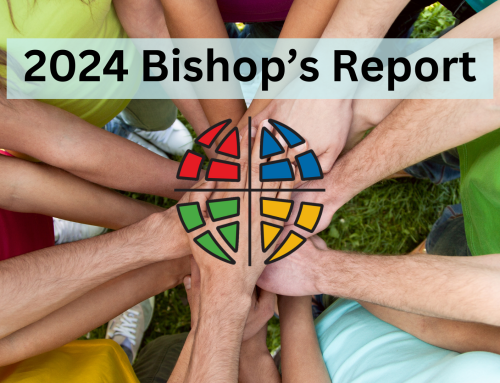2020 marks the 50th anniversary of the ordination of women in the ELCA, the 40th anniversary of women of color, and the 10th anniversary of LGBTQ+ siblings.
It’s an incredibly important marker for the ELCA, though it is only the beginning for the Church, as women are still denied ordination across the denominations and hold less than 15% of the leadership positions in the worldwide church! Therefore, in 2020, we in the Oregon Synod will highlight one woman from Christian history every week for fifty weeks. Some you may know, others you may not, but all worthy of our respect and gratitude.
#22 Mother Mary Jones
In 1897, an epidemic of yellow fever took the lives of Mary Jones’ husband and four children. “One by one my four little children sickened and died. . . I sat alone through nights of grief. No one came to me. No one could.” Jones would dress in black for the rest of her life, never remarry and never birth another child, but she became a mother figure for many, starting by entering other quarantined houses to help care for the sick—who were disproportionately poor (the wealthy fled the city). Within a few years, Mary remade her life, working for the wealthy women of Chicago as a dressmaker. Again, she saw the sharp contrast between the experience of the wealthy and the dire experience of the poor and found it particularly disturbing that the wealthy “seemed neither to notice nor to care.“ Tragedy struck again in 1871 when she lost her home and livelihood in the Great Chicago Fire. What was she to do now? A poor, widowed, homeless, female Irish immigrant approaching middle age with nothing? She began a new life—rising from the ashes of her tragedies to become a fiery champion for the working poor. She became a prominent union and community organizer. She discovered she had a talent for public speaking. She was charismatic, simultaneously antagonistic, and witty. She was able to rouse men, women, and children to fight for better treatment. Her activism was rooted in her deep care for others and the worker’s christened her “Mother Jones.” She was indefatigable, spending the rest of her long life traveling, speaking, getting arrested, being jailed, and generally getting into trouble. She believed in equality, fighting for the rights of immigrants and Black Americans, believing in the need for their leadership within the cause. She founded the Social Democratic Party and helped establish the Industrial Workers of the World. She was little—barely 5 feet—grandmotherly type who was labeled “the most dangerous woman in America” by the anti-unionists. And she was dangerous, to anyone content to live with systemic injustice. She was not. While critical of organized religion—because of how easily it could ignore the plight of the poor—Christian social teachings and love for the poor fueled her work.





